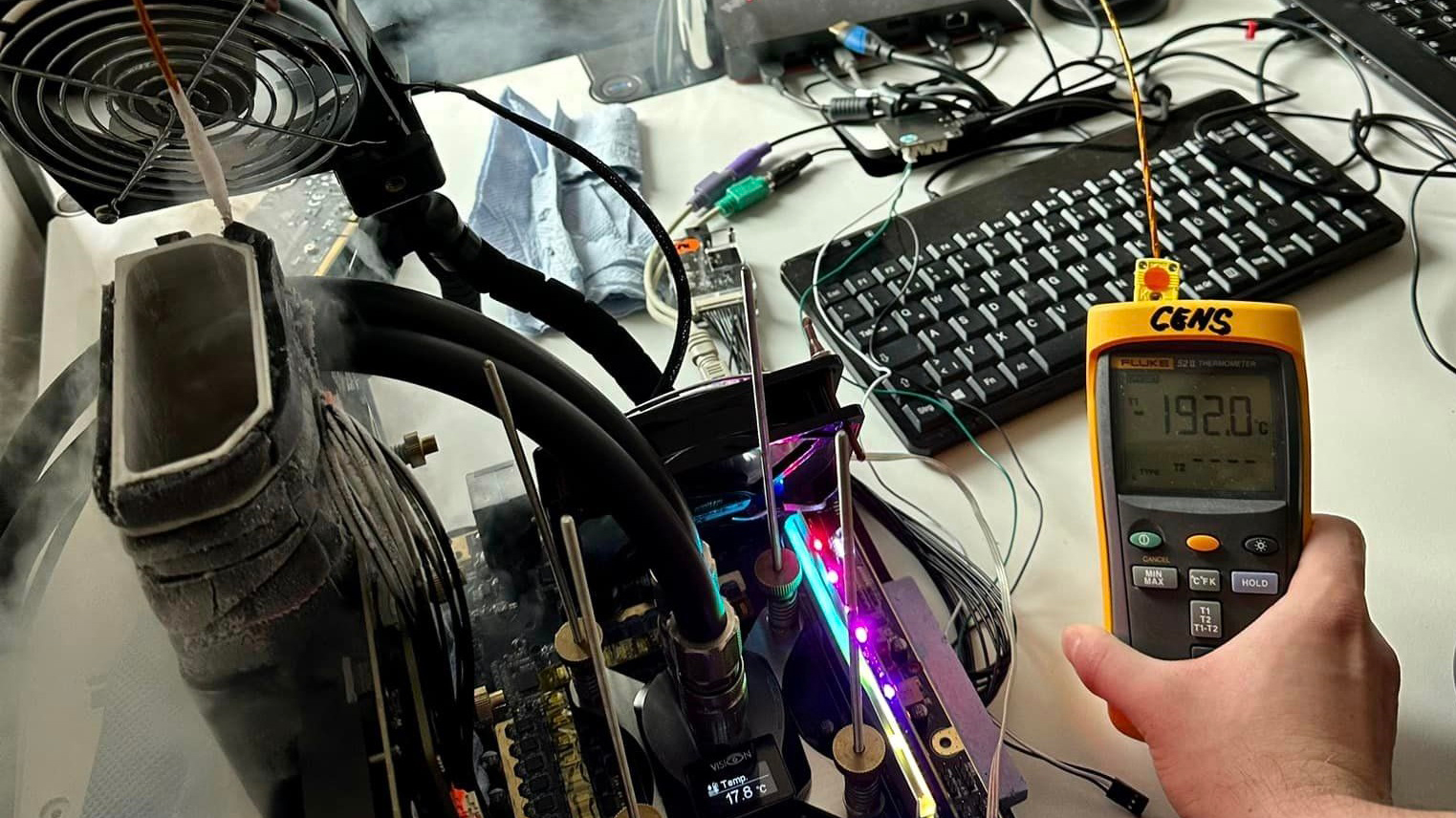
Overclocking enthusiast Cens has managed to overclock Nvidia's RTX 4090 to 3.825GHz with 3D stability, making it the highest overclocked GPU in history to earn that title. Previous RTX 4090 overclocks, including 3.7GHz and 3.825GHz attempts made by OGS were only stable in non-3D applications, which are easier on the GPU. The overclock was accomplished with sub-zero liquid nitrogen overclocking and stress-tested with Unigine's Superposition benchmark.
As mentioned, the incredible part about Cens' world record is that it was accomplished with a full 3D stress test on the GPU. This is something you don't see all that often when overclockers are targeting frequency records rather than performance records. Usually, frequency records are won by keeping the GPU clock speed high with low-stress applications to keep the GPU stable.
First to break the 3800MHz barrier in 3D🔥 Colorful Geforce 𝟒𝟎𝟗𝟎 𝐢𝐆𝐚𝐦𝐞 𝐋𝐀𝐁 #1🥇Unigine Superposition 8K - 187013825 | 1588 MHz @iGameColorful @NVIDIAGeForce @GeForce_JacobF @VideoCardz @3DCenter_org pic.twitter.com/c8QaSg7ZDAMay 9, 2023
This was the case with the previous few frequency record holders including OGS's 3.7GHz and 3.825GHz world records. Both of these records were recorded with GPUPI, which is a GPU computing benchmark that is not nearly as intensive as a 3D benchmark like Superposition.
As a result, Cens' overclock is very impressive, and demonstrates a new level of capability for Nvidia's Ada Lovelace GPU architecture. With Nvidia's RTX 4090 now fully capable of achieving 3.825GHz under full load, there's now a significantly greater chance of the GPU reaching higher clocks, and possibly breaking the 4GHz barrier. All we're waiting for now is an overclocker that's skilled enough to hit these higher frequencies.
Cens' 3.825GHz overclocking setup included a Colorful GeForce RTX 4090 iGame LAB graphics card paired with an Intel Core i9-13900K running on a Z790 Dark Kingpin motherboard. To achieve 3D stability, the GPU was cooled to -34.6C with a pot temperature under 190C. This was enough to keep the GPU clocked at 3.825GHz consistently for the entire duration (as seen by the GPU-Z frequency graph), and resulted in a Superposition score of 18,701 points in the 8K optimized benchmark.







